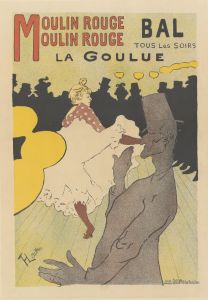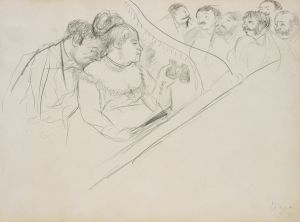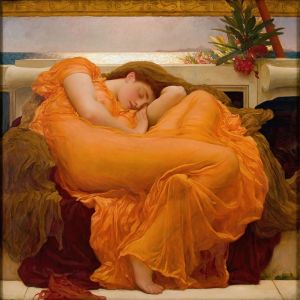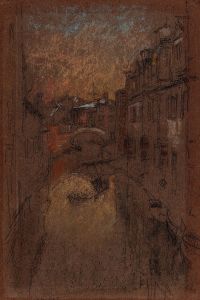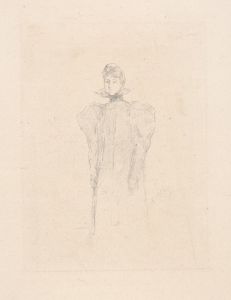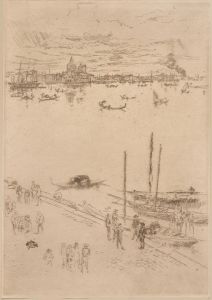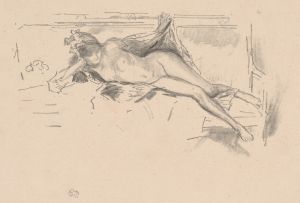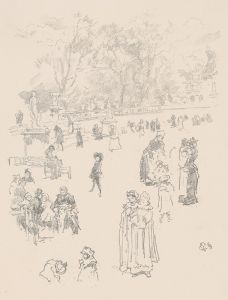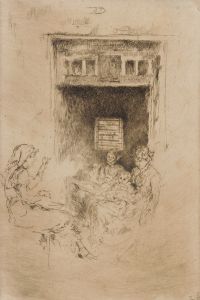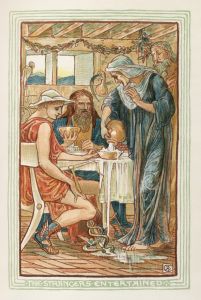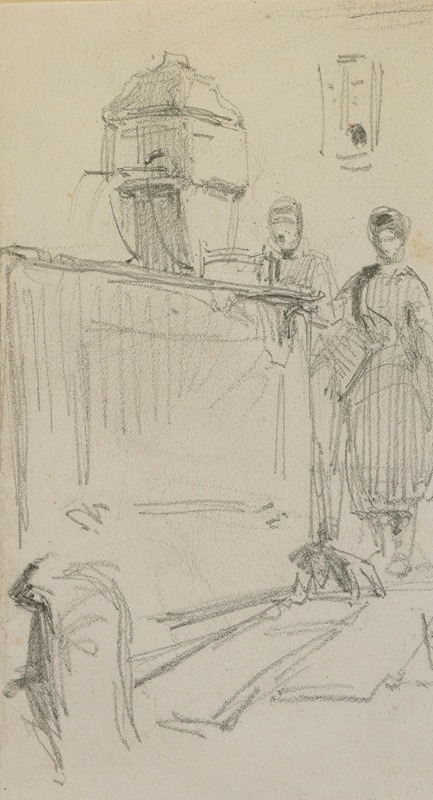
Figures by a fountain
A hand-painted replica of James Abbott McNeill Whistler’s masterpiece Figures by a fountain, meticulously crafted by professional artists to capture the true essence of the original. Each piece is created with museum-quality canvas and rare mineral pigments, carefully painted by experienced artists with delicate brushstrokes and rich, layered colors to perfectly recreate the texture of the original artwork. Unlike machine-printed reproductions, this hand-painted version brings the painting to life, infused with the artist’s emotions and skill in every stroke. Whether for personal collection or home decoration, it instantly elevates the artistic atmosphere of any space.
"Figures by a Fountain" is a painting by the American artist James Abbott McNeill Whistler, known for his contributions to the Aesthetic Movement and his innovative approach to art. Whistler, born in 1834 in Lowell, Massachusetts, spent much of his career in Europe, where he became a prominent figure in the art world.
Whistler's work is often characterized by its subtle tonal variations and emphasis on mood and atmosphere, rather than detailed representation. He was influenced by a variety of sources, including Japanese art, which is evident in his use of space and composition. Whistler's approach to painting was revolutionary for his time, as he often focused on the harmony of color and form, rather than the subject matter itself.
"Figures by a Fountain" exemplifies Whistler's artistic philosophy. The painting features a group of figures gathered around a fountain, rendered with Whistler's characteristic attention to tonal harmony and composition. The figures are depicted in a manner that emphasizes their relationship to the surrounding space, rather than their individual identities. This approach reflects Whistler's belief in "art for art's sake," a principle that suggests art should be appreciated for its beauty and composition, rather than its narrative content.
The painting is notable for its use of color and light, which create a serene and contemplative atmosphere. Whistler's palette is typically muted, with soft blues, grays, and whites that contribute to the overall sense of harmony. The figures are integrated into the landscape, with the fountain serving as a central focal point that draws the viewer's eye.
Whistler's technique in "Figures by a Fountain" demonstrates his mastery of composition and his ability to convey mood through subtle variations in tone and color. The painting reflects his interest in creating a sense of balance and unity within the artwork, a hallmark of his style.
Throughout his career, Whistler was known for his innovative approach to art and his willingness to challenge traditional conventions. His work, including "Figures by a Fountain," has had a lasting impact on the art world, influencing subsequent generations of artists. Whistler's emphasis on the aesthetic qualities of art, rather than its narrative content, paved the way for modernist movements that prioritized form and color over representational accuracy.
"Figures by a Fountain" is a testament to Whistler's artistic vision and his ability to create works that resonate with viewers on an emotional and aesthetic level. The painting remains an important example of Whistler's contribution to the Aesthetic Movement and his enduring legacy in the history of art.







